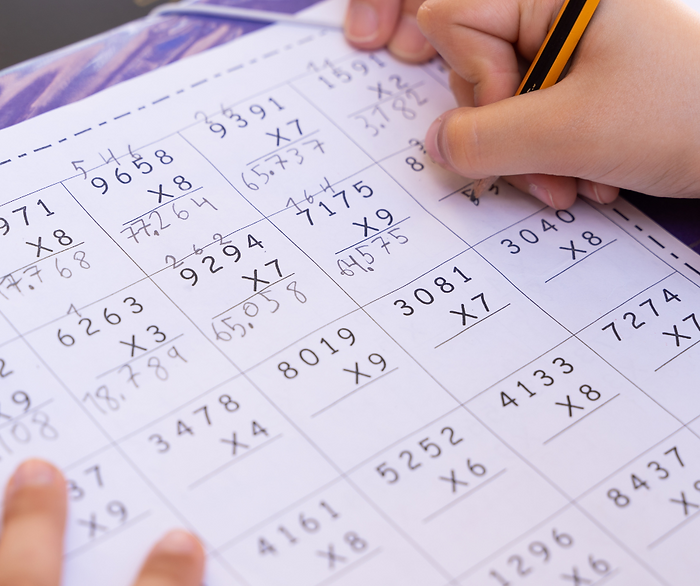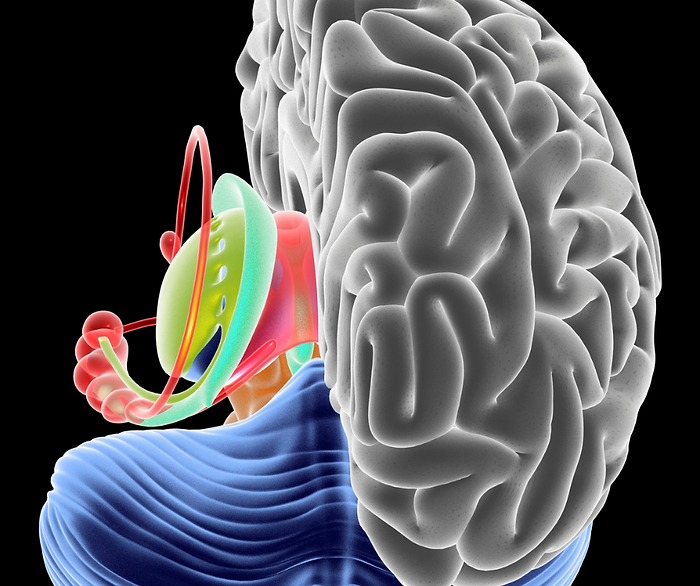Whenever we learn a language – whether we’re learning Spanish, beginning to play an instrument, or understanding how nature speaks – we begin with the basics. What are the building blocks for this language? What foundational facts do we need to learn before we get to dig into more complex questions and make more profound connections?

The same is true for math and its role in STEM-related work. How can we expect students to solve complex math problems and connect patterns in data without really grasping the building blocks of math? This is why math fact fluency is so crucial.

What is math fact fluency?
Fact fluency in math is a student’s ability to quickly recall math facts such as addition, subtraction, multiplication, and division. This is a learning process of committing these facts to long-term memory so students do not need to rely on finger counting or image-based number lines. Math fact fluency is a multi-step progression that gets students to a point of automaticity with basic math concepts which then allows them to solve more complex mathematical problems.
Why is math fact fluency important?
Shockingly, an Education Week survey found that educators believe math fact fluency is helpful, but not essential. However, science disagrees.
Cognitive scientists hold that fact fluency is essential because it locks basic math facts in the long-term memory which then frees up a student’s working memory.
Working memory is the function of the brain that makes sense of and applies experiences, memories, and information stored in both the long and short-term memory to solve complex problems. In the case of math fact fluency, working memory draws on students’ stored, automatic math facts and creates a flexible strategy that allows students to solve longer and more complicated math problems. This becomes especially important when students enter the realms of science and technology where they will be expected to apply more abstract uses of math to analyze data and connect statistical relationships.
Common misconceptions about math fact fluency

1. Math automaticity and math fluency are the same thing. Automaticity does not equal fluency. While a student may be able to rattle off their multiplication table, it does not mean that they have a strategy for taking that information and applying it. Fluency relies on a student’s ability to understand how their automatic knowledge fits into a variety of contexts – everything from high-level math problems to running trial and error tests and developing algorithms. The four tests that determine fluency are flexibility, appropriate strategy use, efficiency, and accuracy.

2. Timed tests are effective. Timed tests can actually wind up harming a student’s math fact fluency. They train students that fast = best. But this is not always the case. Students do not have the time to process what strategies they used to arrive at an answer, nor is there feedback on the flexibility within a student’s strategy.
3. Math drills are the way to go. Think of a drill bit. Through repeated motion, it creates an indent. While drills can help students commit math facts to memory, they do not teach fluency which is multi-faceted and flexible. Students need to be educated in how to apply strategy, not simply repeat math trivia.

4. MEMORIZE. This is the foundational step that fluency relies on (students committing basic math to memory). But memorization does not teach fluency! To help a student reach math fluency, it is necessary to ensure they have a strategy to apply their memorized knowledge to help them solve a myriad of different math problems.
How to develop math fact fluency

1. Build short-term to long-term to working memory over the years.
Developing fluency must build all 3 memories: short-term, long-term, and working. Educators should move linearly to build these different memory banks. First, build students’ short-term memory by introducing numbers and explaining how they interact with each other. Then, work on making these facts concrete in the long-term memory through repetition and practice while also introducing some engaging strategy techniques. Finally, develop the working memory by testing students’ comprehension of strategy and variety of problem-solving. Have students verbalize their process when they’ve gotten an answer. Place students in a teacher role and have them explain to a peer how to solve a problem. Use visual aids to diversify how a student perceives a concept.
This progression will naturally solidify students’ automaticity and supply students with the deep comprehension they need to handle abstract math.

2. Teach math as an interconnected network.
We understand nature and science when we comprehend how ecosystems interconnect. The same is true in mathematics. It is important to teach students that numbers interact within a network that builds on and communicates with itself.
When a student understands that numbers relate to each other within a network rather than simply as individual integers, they are better able to break out of systemized problem-solving and place numbers in different contexts.
Brian Bushart, A 4th Grade teacher in New York, recently presented on math fact fluency at an Education Week panel in May. He shared that he has some students who can solve a math fact like 8 x 5 easily but cannot not so readily solve 8 x 6. This issue, he says, is remedied when students understand numbers’ relationships to each other.
“I want kids to start to notice that . . . 8 x 5 is almost 8 x 6, which is almost 8 x 7. That’s the kind of space I want them to be in.”
The takeaway here? Calculators are out. The digital process provides fast, automated answers without helping students comprehend the interplay between numbers.

3. Create opportunities for success.
Young people need to see themselves succeeding . . . often. Without a consistent sense of progress, students can begin to feel more overwhelmed by what they don’t know than curious about what they still must learn. This leads to a learning environment where students shut down rather than experiment.
This is why Bushart only tests his students on math recall at most once a week – because ultimately consistent practice and healthy strategy-development is more helpful to building students’ confidence than constant testing of recall.
“You don’t want to bombard them with, I don’t know, I don’t know, I don’t know,” he said. “You want a lot of success in there.”
It’s also helpful to review learned material while introducing new concepts. This keeps students from getting burned out with an onslaught of information they don’t yet know. By bouncing back and forth between already learned and new concepts, students gain confidence that motivates them to keep learning.
Approaching math education in this way is critical to develop the young minds that will be the next STEM innovators. By developing math fact fluency early on, we will ensure that students will be prepared to think flexibly, creatively, and innovatively in any field that is developing the future of science, technology, and engineering!


